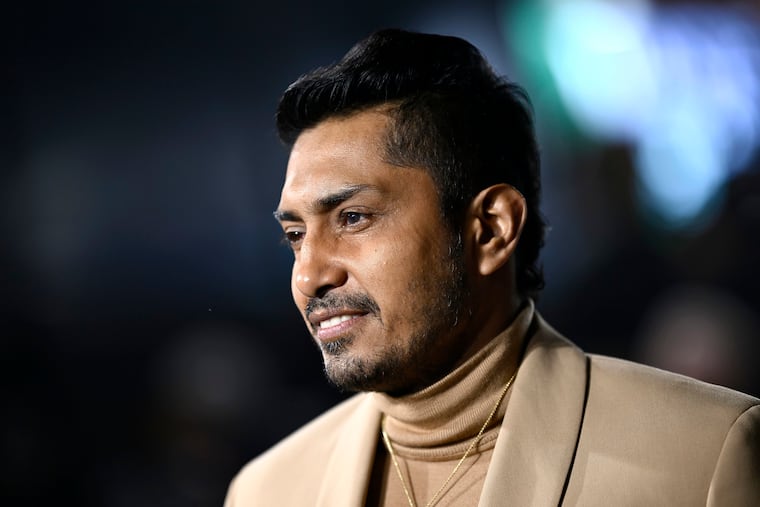With an Indigenous antihero, representation takes a step forward in ‘Wakanda Forever’
The American film, with its wide reach and cultural impact, elevates Indigenous characters. This matters across the world and closer to home.

Black Panther: Wakanda Forever, the sequel to Black Panther, is a triumph of representation. Like its predecessor, its cast inverts the usual ratio between white actors and those of color in big-budget movies. However, it’s the debut of Namor — the first Indigenous superhuman in the Marvel Cinematic Universe — that raises the bar even higher and connects with me personally.
I saw the first Black Panther opening weekend in Atlanta with a packed, mostly Black audience, and it was electric. The late Chadwick Boseman as King T’Challa was magnetic, the female warriors of the Dora Milaje were imposing, and when M’Baku, played by Winston Duke, barks at a white character to intimidate him into silence, the theater exploded.
I got it but I didn’t get it. I understood the thrill that comes with seeing yourself reflected on screen in a position of power — in the biggest mass entertainment there is — but I still watched from a respectful emotional distance.
Wakanda Forever brought me in close.
» READ MORE: Philly flair at Wakanda Forever: 7 interesting people we met at the King of Prussia premiere
As a Mexican who doesn’t think his family line started at Spanish conquistador Hernán Cortés and then proceeded unsullied through New Spain and beyond, I was incredibly proud to see actor Tenoch Huerta play Namor as an anti-colonialist bronze demigod. Even the goofy trappings that date his origin to the Golden Age of comics — the ankle wings, the pointy ears, the green short shorts — cannot undercut the dignified strength the Mexican actor brings to the role.
As first introduced in 1939′s Marvel Comics No. 1, Namor was half-human, half-Atlantean, and presented as white. Making him Indigenous and transforming his underwater kingdom from Atlantis to the Mayan-inspired Talokan is a genius idea by director Ryan Coogler and his cowriter Joe Robert Cole.
If the original Black Panther showed an African nation able to live up to its full potential unspoiled by colonizers, applying the same wish fulfillment to Mesoamerica now seems obvious. It is also painful. After all, to see the wonders of Talokan, as those seen in Wakanda before it, is to be reminded of thriving real-world civilizations conquered, destroyed, and cast away as subhuman.
There are differences in the horrors of slavery and the brutal conquest of Latin America, but their vestiges are largely the same. For too many in America (and I use that term broadly here, to mean the whole continent), whether you’re Black or brown, you are greeted with suspicion. Always the other, even in your own country.
In a Spanish-language interview with El Financiero, Huerta spoke about being followed by a security guard while shopping in Mexico City, of being harassed by police while out walking, of taxis passing him by before stopping for his blonde girlfriend. Sound familiar?
» READ MORE: ‘Black Panther' sequel scores 2nd biggest debut of 2022
Racism is alive and well in Latin America, and Wakanda Forever is not going to change that. But it is momentous to have an American film, with its wide reach and cultural impact, elevate Indigenous characters. It matters across the world and closer to home.
Representation is not only about how others perceive us — but also how we perceive ourselves. When people of color look up at a movie screen, do we see all we can be or only the prescribed roles we are assigned?
The character of Namor, an antihero with complicated motivations, is rare. In fact, if they are featured at all, Latinos are rarely complex main characters in American movies.
Latinos make up about 19% of the U.S. population, yet Latino actors were only 7% of film leads in 2021, according to the University of California-Los Angeles’ latest “Hollywood Diversity Report.” That’s an improvement. From 2009 to 2019, the average percentage of Latino speaking roles in movies was 5.2%, according to the University of Southern California’s Annenberg Inclusion Initiative. That same study found that in 2019, 40% of top-billed Latinos played criminals.
To add insult to injury, Latinos make up 25% of regular moviegoers, helping keep Hollywood in business. In a sense, we pay for the privilege of being ignored or maligned.
Some may say that I’m seeing the glass half empty, that Afro-Latina Ariana DeBose recently won the best supporting actress Oscar for West Side Story, or remind me of Coco and Encanto. Marvel itself has given prominent roles to Oscar Isaac, Gael García Bernal, and Xochitl Gomez this year.
That’s fantastic, but call me when there are so many standout performances and Latino stories being told that you can’t count them on one hand.
In the meantime, I look forward to Namor’s continued adventures. Talokan forever.
Luis F. Carrasco is the deputy opinion editor at The Inquirer.